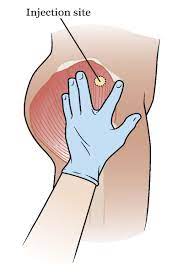Ventrogluteal Injections
In the realm of medical injections, precision and safety are paramount. Enter the ventrolateral injection, a technique revered for its accuracy and reduced risk of complications. In this comprehensive guide, we’ll delve into the world of ventrogluteal injections, uncovering their significance in healthcare practices.
Benefits of the Ventrogluteal Injection Site

ventrogluteal injection?.kdt5
\[]’l,
Why do healthcare professionals favor the ventrogluteal site for injections? It’s not by chance. In this section, we’ll explore the advantages that come with choosing the ventrogluteal site, from its anatomy to its reduced risk of nerve and vascular damage.
When and Why Ventrogluteal Injections Are Used
Ventrogluteal injections aren’t an everyday occurrence, but they play a critical role in specific medical situations. Here, we’ll uncover the scenarios and conditions that call for the use of ventrogluteal injections. From vaccinations to therapeutic treatments, discover when and why this technique shines.
Anatomy of the Ventrogluteal Area
To master the art of ventrogluteal injections, one must first understand the canvas—the anatomy of the ventrogluteal area. In this section, we’ll provide a detailed exploration of the anatomical landmarks that healthcare professionals rely on for precise injections.
Proper Ventrogluteal Injection Technique
Precision in ventrogluteal injections requires the right technique. In this step-by-step guide, we’ll walk you through the proper procedure for administering a ventrogluteal injection. From patient positioning to skin preparation, we’ve got you covered.
Ventrogluteal Injection Safety
Safety is non-negotiable in healthcare practices. In this section, we’ll delve into the safety measures and precautions that healthcare professionals must follow when administering ventrogluteal injections. Learn how to minimize risks and ensure patient well-being.
Pain Management and Comfort for Patients
Minimizing discomfort during and after ventrogluteal injections is crucial for patient well-being. In this section, we’ll provide healthcare professionals with tips and strategies to enhance the patient experience, ensuring both pain management and overall comfort.
FAQs related to ventrogluteal injections, along with their answers:
1. What is a ventrogluteal injection, and why is it used?
A ventrogluteal injection is a medical procedure where medication or a vaccine is injected into the ventrogluteal muscle. It is used for precise drug delivery and to reduce the risk of complications.
2. How can healthcare professionals locate the ventrogluteal site accurately?
To locate the ventrogluteal site, healthcare professionals typically use anatomical landmarks such as the greater trochanter, anterior superior iliac spine, and iliac crest to ensure precision.
3. Are ventrogluteal injections suitable for all patients, or are there specific criteria for their use?
Ventrogluteal injections are generally suitable for most patients, but healthcare professionals consider factors like age, muscle development, and medical condition when choosing injection sites.
4. What types of medications or vaccines are commonly administered using the ventrogluteal site?
Medications and vaccines that require deep intramuscular injection, such as certain antibiotics, vaccines, and pain relievers, are often administered in the ventrogluteal area.
5. Is it painful to receive a ventrogluteal injection?
While discomfort can vary from person to person, healthcare professionals aim to minimize pain by using proper techniques and ensuring patient comfort during the procedure.
6. How can patients or caregivers recognize signs of infection or complications after a ventrogluteal injection?
Signs of infection or complications may include redness, swelling, warmth, or discharge at the injection site. If any of these symptoms occur, it’s essential to seek medical attention promptly.
7. Can ventrogluteal injections be self-administered by patients at home?
Ventrogluteal injections are typically administered by healthcare professionals. However, patients may be taught how to self-administer under specific circumstances and with proper training.
8. What are the advantages of ventrogluteal injections compared to other injection sites?
Ventrogluteal injections offer advantages such as reduced risk of nerve and vascular damage, excellent muscle absorption, and precision in drug delivery.
9. Are there any contraindications or situations where ventrogluteal injections should be avoided?
Ventrogluteal injections should be avoided if there is a known allergy to the medication being administered or if there is a local infection at the injection site.
10. How can healthcare professionals stay updated on best practices for ventrogluteal injections?
Healthcare professionals can stay updated by referring to medical guidelines, attending training sessions, and participating in continuing education programs to ensure they follow the latest best practices.
Conclusion
As we wrap up this comprehensive guide to ventrogluteal injections, we’ve explored the technique’s intricacies, benefits, and safety measures. In this concluding section, we’ll summarize key takeaways and provide a clear call to action, urging healthcare professionals to implement these practices in their clinical settings.




